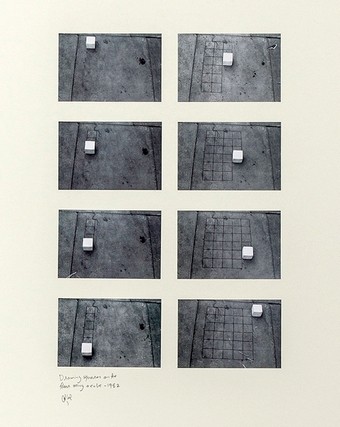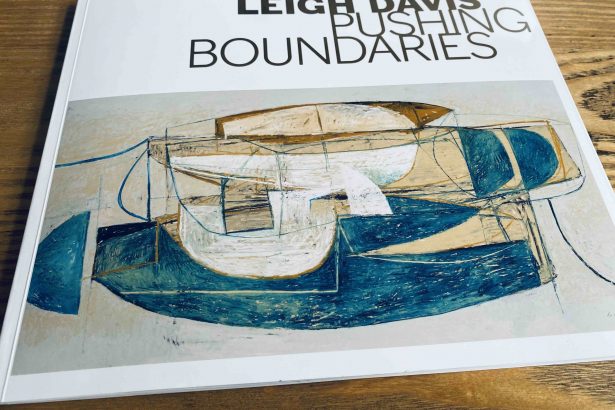The lights dim, the audience quietens in expectation. Suddenly, amid a riot of colour and stirring music, a true, timeless icon looms large on huge screens, drawing everyone deep into the vivid images. They are instantly engrossed. But there is no Han Solo, and this isn’t a new 3D Star Wars movie in an IMAX movie theatre. Instead, somewhat incredibly, this is an exhibition in the United Arab Emirates devoted to Dutch painter Vincent Van Gogh – and it’s changing the way we think about and experience art.
Van Gogh Alive comes to Dubai in March after a six week run earlier in the year in Abu Dhabi, and has been wowing audiences across the world since its debut in 2011. The premise is simple – to use huge high definition projections, light, sound and spectacle not just to immerse an audience into the groundbreaking work of the artist, but also to tell the story of his life. It’s about as far away from queuing in a hushed, traditional gallery for a sight of a small still life of some sunflowers as it’s possible to get.
“We wanted to create a new way to experience art and open it up to a wider audience, and that means people who might not traditionally visit art galleries,” confirms Rob Kirk from Grande Exhibitions, the company behind Van Gogh Alive. “The idea is to engage and entertain – and reflect the kinds of things people expect from a cultural experience in 2018. You have to do a lot more to capture people these days.”
Interestingly, Kirk says Grande Exhibitions consider themselves storytellers more than anything else, so when they were considering which artist might fit best for their first show, there were important decisions to be made not only about which had the most worldwide appeal, but how their “brand” of visually impressive art would work across 40 huge screens.
“And Van Gogh is top of that list; one of the most famous artists to have lived, his artwork is tremendously vibrant and colourful,” he says. “There’s a great story of a tortured soul who only painted for ten years of his life but produced this huge body of spectacular work.
“So we wanted to take that work onto a large scale and immerse visitors in the paintings, combining it with a music score – which is a very important component of the experience. The scale is so awe-inspiring, it’s almost like you’re part of the painting.”
In fact, Kirk likens the process of putting Van Gogh Alive together to adapting a much loved book for the big screen. Over 3,000 digital images are used in the show, including the famous Sunflowers, The Starry Night, Self-Portrait and Bedroom In Arles, and once permission has been gathered to use them, the really hard editorial and production work begins, with animations commissioned and even some set building: you can literally step into Van Gogh’s famous bedroom painting and have your photograph taken.
Given that the originals are dispersed across the globe, you can see Kirk’s point that a show such as Van Gogh Alive can offer not just a new way to experience Van Gogh’s work, but perhaps the only way – unless you want to travel thousands of miles to museums on different continents. It’s now been in 36 cities across the world, and though of course you can’t get up close and personal with the actual brushwork on a digital representation, the show is meant to be complementary rather than a replacement for the originals.
“We don’t dictate what people should take from the experience,” Kirk explains. “Predominantly, it’s families, younger people and the digitally savvy visiting and we hear most people say they want to learn more about art or Vincent Van Gogh having done so. They just want to be entertained – as well as educated.”
And the educational element – as well as the whizzy tech, there’s still a wall to learn about Van Gogh, his life and famous paintings – was key to the decision by Dubai-based events and entertainment company 6IX to license Grande Exhibitions’ show for UAE audiences. There’s also patronage from the United Arab Emirates Ministry of Culture and Knowledge Development, and support from Emirates Airline.
“I spoke to a family in Abu Dhabi who told me it was the first gallery they’d been to where their kids wanted to stay longer than them!” laughs 6IX director Jessica Zull. “So we do want this to be an engaging, entertaining and educational experience which will make sense for people who might not usually go to an art gallery or know much about art. It’s about providing a gateway experience for everyone, and maybe they will find themselves wanting to know more about Van Gogh – and art generally.”
Zull says that although she’s now experienced Van Gogh Alive hundreds of times, she’s still struck by how the show continues to genuinely move her, thanks to the combination of movement, image and music.
“And that’s the feedback we’ve already got from visitors – it’s quite an emotional experience thanks to its unique concept,” she says. “You see all of his paintings completely differently, and the way you can forget everything around you and be completely immersed into the painting is really quite beautiful.”
In fact, Zull argues that Van Gogh Alive has become something of a phenomena, given it’s been experienced by over two million people since 2011. And with Grande Exhibitions now offering similar “blockbuster experiences” with Leonardo Da Vinci and the French Impressionists – as well as other non-art shows – it certainly feels that their mix of technology and entertainment might be the future of art exhibitions.
“Actually, a lot of traditional galleries are looking at this technology to introduce into their own exhibitions,” reveals Grande Exhibitions’ Rob Kirk, “whether that be because the originals are getting too fragile or because audience expectations are for an immersive, digital experience these days.”
So might we see a Virtual Reality Van Gogh Experience soon, where you strap on some goggles and are literally immersed into the painting? Perhaps surprisingly, Kirk isn’t so sure, despite the fantastic opportunities the technology offers.
“One of the real benefits of Van Gogh Alive it’s that it’s a shared experience – you can see the amazed reactions of family and friends,” he says. “We could do Virtual Reality quite easily, but it’s singular. You could sit and do it at home.
“For us, going to Van Gogh Alive is about being in a crowd, feeling a part of something that everyone around you is enjoying. It’s more like a rock concert in that sense.”
Vincent Van Gogh: The Tortured Genius?
Vincent Van Gogh. The name alone conjures up certain images about the 19th century Dutch painter. The man who cut his own ear off in a rage. Who lived in obscurity and poverty yet created Sunflowers, which became, at $39.9m, the most expensive painting ever sold 100 years later. Whose vivid, expressive paintings were all created in a dramatic ten year period characterised by periods of mental illness and cut short by his suicide in 1890, aged 37.
So Van Gogh not only appears to fit the romanticised idea that genius and madness are closely interlinked, he’s the poster boy for it. This was the man who actually painted the result of his mania in “Self Portrait With Bandaged Ear (1889)”, less than a year before his death via revolver, and wrote letters pondering the connection himself. Does his whirling brushwork give us a window into his psychological state? It’s a tempting conclusion – but Van Gogh experts also argue that his mental illness was as much a barrier to his work as the reason for a style that would go on to be called expressionism. What is certain, is that he channelled his emotions, whatever they were, into incredible painting.
Vincent Van Gogh: His Greatest Hits.
Given Van Gogh only actually sold one painting in his lifetime, his Greatest Hits collection is decidedly posthumous. But his most famous painting is definitely Sunflowers (1888), although perhaps we should say paintings, given there’s more than one version. A still life full of energy, and painted in Arles, France – the location of one of Van Gogh’s own favourites, Bedroom In Arles (1888). This painting’s classic simplicity – a room, a bed, a window, some chairs and tables was a deliberate attempt to “stop thinking and imagining”. But the room’s dimensions and hues are still brilliantly unnerving, which is also how one might describe Starry Night (1889), painted during his stay in a psychiatric hospital and full of swirling, ethereal atmospherics. Also painted in hospital was the incredible study in colour, Irises (1890) – where purple flowers were set vividly against a yellow background. Except the red pigment faded, so the irises are now blue. Finally, and fittingly, for an artist who became just as famous for who he was as his work, Self Portrait With Bandaged Ear (1889, see other boxout), is a spectacular window into his troubled mindset.
Van Gogh Alive is at Dubai Design District D3 from March 11, 9am to 10pm Mon to Sun. www.vangoghaliveuae.com


